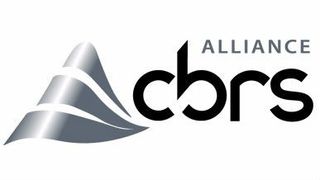CBRS Alliance Specs Target Interoperability

The CBRS Alliance has released two specifications that aim to drive interoperability for devices that support the 3.5 GHz Citizens Band Radio Service, a shared swath of spectrum that cable operators are eyeing for wireless and mobile services.
RELATED: CBRS Spectrum to Open Windows of Opportunity for Cable Ops
The Network and Coexistence Baseline Specs are focused on interoperability of CBRS Alliance-certified devices that tap into that band and lean on LTE-based technologies. The CBRS Alliance, which counts AT&T, Verizon, Comcast, Arris, Google, CableLabs, and Charter Communications among its members, is evangelizing LTE-based solutions in the CBRS band on the belief that it will help to ensure product interoperability.
RELATED: Ruckus Gears Up for CBRS Band
On that point, the CBRS Alliance noted that the Baseline specs aim to enable the deployment and coexistence of LTE Private Networks, LTE Neutral Host Networks or a Hybrid (Private and Neutral Hosted Network) in the 3.5 GHz band using Standard 3GPP LTE technology. They also align with WInnForum Baseline specs, the group said.
The CBRS band, a 150 MHz-wide batch of spectrum in the range of 3.55 GHz to 3.7 GHz, has been underutilized, with most of it used today by the U.S. Navy for flight operations for aircraft carriers, along with some satellite uplinks. In addition to supporting incumbent users, the spectrum will also be allocated for licensed (Priority Access Licenses) and unlicensed use (general authorized access).
That scenario is setting up a new market for spectrum allocation servers and platforms that ensure that new users in the band don’t interfere with incumbent users.
Multichannel Newsletter
The smarter way to stay on top of the multichannel video marketplace. Sign up below.
RELATED: Federated Wireless Targets ‘Third Model’ for Mobile (subscription required)
CBRS is particularly attractive to cable operators because the spectrum can be used complement their mobile virtual network operator (MVNO) agreements, enabling them to offset some of the network costs associated with new mobile services. Comcast and Charter are among U.S. MSOs that are conducting tests.
RELATED: Comcast Wants to Test CBRS in Philly
“The networking and coexistence specifications are the critical foundation the industry needs to ensure seamless interoperability between CBRS Alliance-certified Citizens Broadband Radio Service Devices (CBSDs) when operating in CBRS,” Dave Wright, president of the CBRS Alliance and director, regulatory affairs & network standards at Ruckus Networks, aid in a statement. “2018 is expected to be a marquee year for CBRS, and we are particularly proud to kick it off with this significant technical achievement.”
RELATED: Small Cells to Play Big Role in Charter’s Mobile Future
“The coexistence specification ensures LTE systems in adjacent channels within the band can operate without the need for guard bands, making use of the spectrum much more efficient,” added Al Jette, chair of the Technical Working Group for the CBRS Alliance and head of North American standards at Nokia.
Last week, representatives of NCTA-The Internet & Television Association and some top members met with FCC officials to pitch county-sized licenses for 3.5 GHz services as a compromise between census tracts and PEAs (partial economic areas).
They also raised concerns about Qualcomm's emission limit changes--to facilitate channel bonding--which the cable/broadband operators suggest could cause harmful interference to adjacent C-band incumbents and could “disproportionately disadvantage" lower-power CBRS users.
--John Eggerton contributed to this story
.
